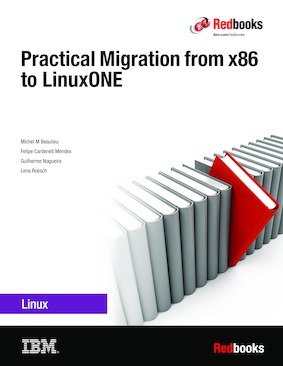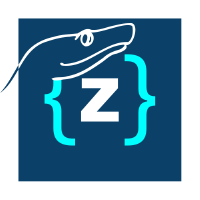Data centers are energy intensive and will account, by some estimates, for as much as 8% of worldwide electricity use by 2030. This makes them excellent starting points to evaluate IT as part of your ESG goals. IBM provides tools for estimating and measuring the environmental impact of your IT infrastructure.
Replacing existing infrastructure with energy-efficient IBM LinuxONE 4 systems, backed by IBM’s decades-long corporate commitment to environmental leadership, can have a significant and immediate effect on energy consumption.
Consolidating Linux® workloads on 5 IBM LinuxONE Emperor 4 systems instead of running them on compared x86 servers under similar conditions can reduce energy consumption by 75%, space by 50%, and the CO2e footprint by over 850 metric tons annually.1
Understand the experience of working with IBM to buy your customized LinuxONE system.
IBM is committed to environmental protection across all of its business activities, from its operations to the design of its products and use of its technology.
IBM's program for the reuse and recycling of end-of-life equipment, managed by IBM Global Asset Recovery Services (GARS), has a goal of less than 3% by weight being sent to landfills or incinerated. In 2023, the number was 0.7%.
IBM LinuxONE is designed for sustainable computing. It is uniquely architected to handle the multi-workload needs of a modern scalable digital business with the highest qualities of service and efficiency, allowing you to grow your workloads with a minimal increase in energy usage.
The ability to run more applications in one environment without impacting performance, throughput, or availability can reduce your IT infrastructure's floor space, cooling requirements, and power consumption. And a 19-inch frame form factor means IBM LinuxONE fit easily into modern data center cooling containment systems for hot aisle/cold aisle configurations.
Energy efficiency has been a hallmark of IBM LinuxONE since the beginning. With each generation, IBM LinuxONE systems became more efficient as capacity grew. Capacity per kilowatt has more than doubled since the first generation.

Consolidating Linux workloads onto IBM LinuxONE can not only reduce IT costs, especially when the software licensing costs are priced per core, it can reduce physical space and power consumption. IBM provides several options for quickly estimating the environmental impact of an IBM LinuxONE system.
The TCO and CO2e calculator helps you estimate the total cost of ownership and emissions of an IBM LinuxONE system and see a comparison to x86. Answer just a few questions about hardware, workload type and software.
The Power Estimation Tool helps you estimate the power consumption and weight of a specific IBM LinuxONE configuration.
- Log in to
Resource Link . (A link is provided below.) - Scroll to Tools, then click Power and weight estimation.
- Click the model you are interested in:
- IBM LinuxONE Emperor 4 LA1 (multi frame)
- IBM LinuxONE Rockhopper 4 LA2/AGL (single frame or rack mount)
Carbon footprint reports help you understand carbon footprint impact across the product lifecycle. They can help you see how a solution will allow you to progress toward your sustainability goals.
An IBM LinuxONE Emperor 4 can have up to 200 configurable cores, and each core can run many servers, meaning you can run thousands of virtual servers on one IBM LinuxONE system.
You might consider applications or
- Are supported by a software vendor on multiple platforms, including Linux on Z or IBM LinuxONE. In this case, migration is relatively simple and there are no support issues.
- Have per-core pricing
- Have high availability requirements
- Have high security requirements
- Need close proximity to data on IBM Z or IBM LinuxONE, or that are a component of IBM Z or IBM LinuxONE applications. You can boost the performance and speed of your Linux applications by putting them on the same physical server as their data source.
- Have high I/O or transactional I/O. Because of its design, IBM LinuxONE excels at handling sustained high I/O rates.
- Have lower sustained CPU peaks and average memory needs. These are ideal workloads for IBM LinuxONE, which been designed to run multiple workloads at a consistently high CPU and memory utilization.
Expect the consolidation to include these phases:
- Planning. Begin by assembling the stakeholders to decide which applications to migrate and how. Your plan will specify the time, risks, and owner for each migration task.
- Proof of concept. Conduct a proof of concept to assess compatibility between the x86 and IBM LinuxONE environments, with a special focus on performance.
- Education. Ensure the technical staff has the necessary skills to carry out the migration and maintain the new environment.
- Building the environment. Prepare the new infrastructure for migration.
- Implementation. Perform the migration. Communication between stakeholders is important during this process.
- Post migration. Document maintenance procedures.
For detailed guidance, see the following IBM Redbook.

IBM provides the ability to view energy and environmental data for your IBM LinuxONE system. You can use this data to understand your current energy use and to report progress towards your sustainability goals.
The
You can also access key environmental and power consumption data, including historical data, using the REST-based HMC Web Services API. This allows you to integrate the data into data center infrastructure management (DCIM) systems and other software such as IBM Instana Observability and IBM Envizi. Data includes ambient temperature and humidity, heat load, exhaust temperature, system power consumption, and power on each line cord phase.
Client projects are available for the HMC, including:
- python-zhmcclient, a client library in pure Python designed to make the HMC Web Services API easily consumable for Python programmers
- zhmc-prometheus-exporter, a Prometheus exporter intended to make it easy to set up custom metric collections.

IBM LinuxONE Rockhopper 4 introduces the ability to conduct power reporting by logical partition (LPAR).
You can integrate HMC data into IBM Instana with the IBM Z HMC sensor, an optional feature of Instana Observability.
You might use the Sustainability Grafana Dashboard with Grafana to visualize major sustainability metrics of migrating workloads from x86 to IBM LinuxONE.
Learn how a single IBM LinuxONE Emperor 4 delivers scalability, doing the work of up to 2000 x86 cores
Learn how IBM LinuxONE Emperor 4 is designed to dramatically reduce energy versus an equivalent x86 infrastructure.
Learn about new capabilities to support power consumption monitoring at the partition level, the HMC Environmental Dashboard and Web Services API, and more.
View a technical planning reference for IT organizations that are considering a migration from their x86 distributed servers to IBM LinuxONE
Answer a few questions to get a personalized total cost of ownership estimate for IBM® LinuxONE and Linux on Z.
Documentation for each IBM LinuxONE model.
A template for Grafana to visualize major sustainability metrics of migrating workloads from x86 to IBM LinuxONE.
Making an impact across three key areas: purpose, roadmap and strategy
Minimize energy use and embed responsible computing across your IT environment
IBM's commitment to environmental protection
IBM's report on progress and performance
Steps to establishing finance-grade sustainability data and a best-practice approach to calculating GHG emissions for reporting and disclosure
A demonstration of how consolidating on IBM LinuxONE Emperor 4 can help you meet your organization’s sustainability goals
A demonstration of the HMC Environmental Dashboard, including partition-level monitoring
Learn how IBM GARS helps clients enhance their supply chain sustainability.
Understand the experience of working with IBM to buy your customized LinuxONE system.
In the How to get started section, the Estimate benefits of consolidation tab has been updated with new instructions and links for the Power Estimation Tool.
A video introducing IBM Global Asset Recovery Services (GARS) was added to the Green IT tab of the How to get started section and the Videos tab of the Technical resources section. The link to Practical Migration from x86 to LinuxONE, on the Consolidate onto IBM LinuxONE tab of the How to get started section, was updated for a new edition.
A link to an IBM Z Hot Topics article was changed to reflect the move of Hot Topics to IBM Docs.
1 Consolidating Linux workloads on 5 IBM LinuxONE Emperor 4 systems instead of running them on compared x86 servers under similar conditions can reduce energy consumption by 75%, space by 50%, and the CO2e footprint by over 850 metric tons annually. DISCLAIMER: Compared 5 IBM Machine Type 3931 Max 125 model consists of three